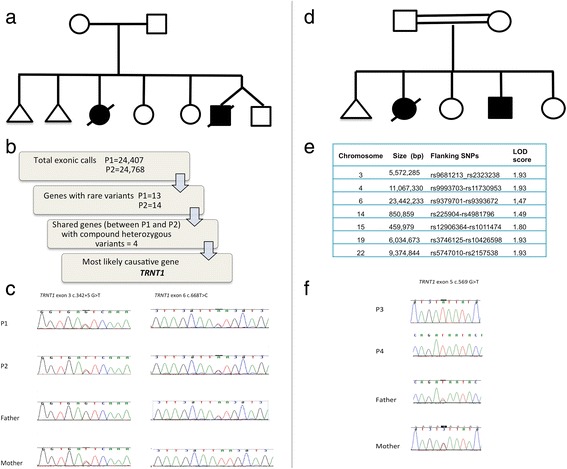Fig. 1.

a Pedigree of family of P1 and P2. b Bioinformatic analysis of whole exome data. c Sanger sequencing results showing that P1 and P2 were compound heterozygous for the TRNT1 mutations. d Pedigree of family of P3 and P4. e Linkage mapping data showing sizes of the chromosomal regions with the highest LOD scores. f Electropherogram demonstrating the TRNT1 mutation in P3 and P4 (c.569G>T p.Arg190Ile) [11]
